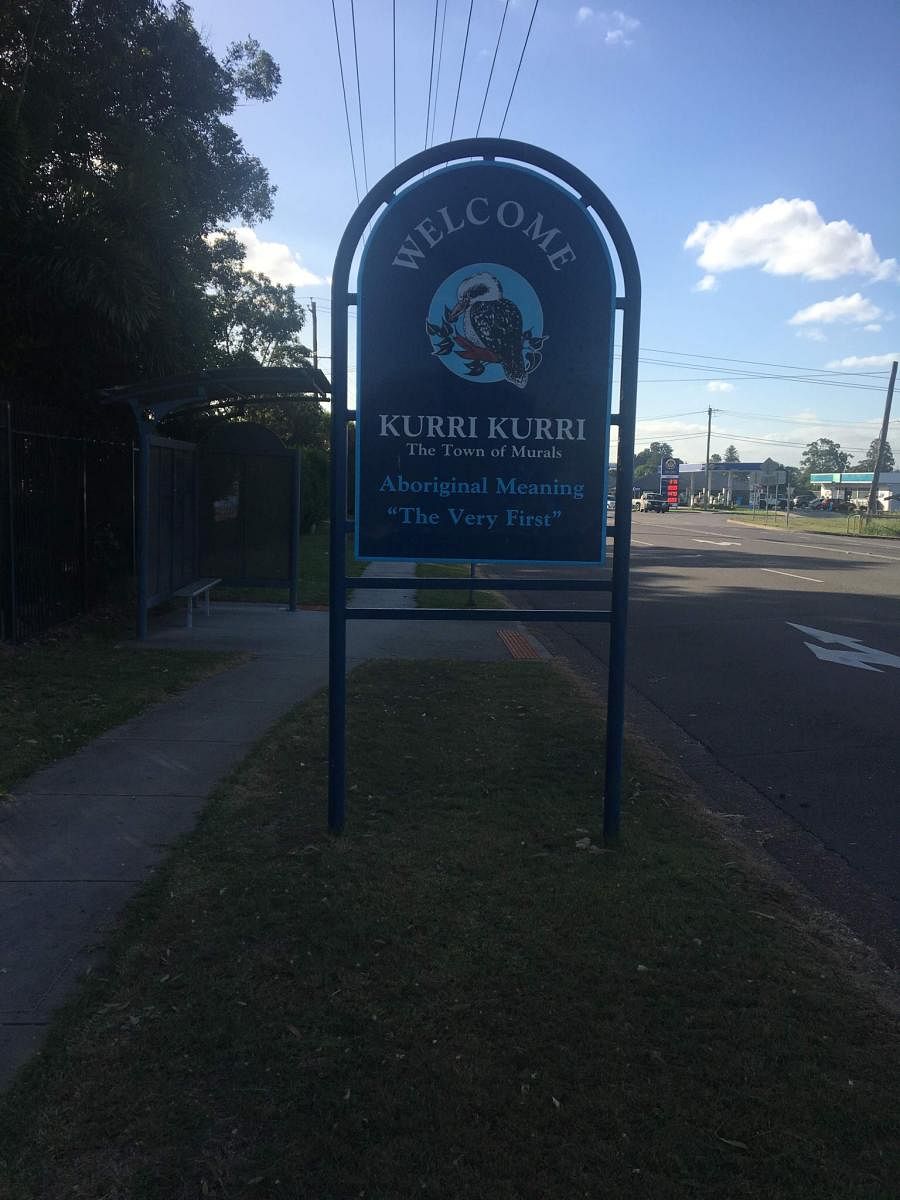
Not enough can be said about the deeply gratifying experience of driving down the 384 km from Port Macquarie to Sydney. With the unwitting parallel of Bengaluru roads on my mind I cannot be boggled enough by the comfort, ease and unfettered joy of regulated traffic and well-marked roads.
I’m overcome by a wave of sympathy for the poor blokes on Indian roads undergoing the daily torture of honking vehicles, overcrowded traffic and cussing co drivers.
Planning to reach Sydney before nightfall and running late, we once again abandon the wine tasting and vineyard tour and decide instead to visit the rather quaint little town of Kurri Kurri.
Kurri Kurri in the aboriginal language of Awabakal (the language of the Awabs) spoken around Port Macquarie and Newcastle, means ‘the very first’. This charming little place dons an air of great leisure and is in a half-asleep mode when we reach there close to evening. No one seems to be in a hurry to do anything or get anywhere. All shops are shut.
With a population that totals to about 17,000, little of which is seen on the roads, the town seems to have wrapped up for the day. We stroll around taking photographs of the town square. There is a delicious nip in the air. Ravenous and ready to pounce on anything edible and vegetarian, we meet with eateries displaying ‘closed’ signs. Finally after much hunting we locate a place run by a Chinese lady and her family. The Thai red curry with boiled rice, Singapore veggie noodles and Malaysian fried rice that we order are freshly made and piping hot. Makes for a deeply satisfying meal.
Mining into history
Kurri Kurri is in the Hunter Valley region of New South Wales (NSW), Australia. This perfectly adorable little town has got some serious history to it. Some interesting beginnings of settlers and some deep past to do with mining.
How? Hunter region is famed for its coal deposits and Newcastle the nearest seaport, a mere 37 km away and from where the mined coal was exported. This formed the Hunter Valley Coal Chain. Known the world over for being the largest exporter of coal, it took its name from Newcastle in England. That one might have been the inspiration for the idiom, ‘taking coal to Newcastle’ which refers to doing something futile or meaningless.
The township of Kurri Kurri and the surrounding district was first established when coal was discovered at East Greta Junction now known as Gillieston Heights. When mining began at the end of the 19th century the coal mine employees lived in very primitive conditions in villages surrounding the future township of Kurri Kurri.
In 1902 after considerable struggle by the coal miners a permanent settlement was established. Kurri Kurri therefore is a miner’s town.
Interestingly, convicts in 1802 with colonial crime records, (Irish political rebels) and others who’d committed petty crimes were put to work in the mines as a form of rigorous punishment. As time went by, there were several hundreds of convicts in exile who laboured in these mines, at the wharf, making salt, burning lime and timber getting...under inhuman conditions.
As coal deposits depleted, the pits began closing down from 1950s. By the 60s the occupation turned to the growing of grapes and wine making. Now Hunter Valley is known for its Vineyards and a bouquet of wines. Moving on, Kurri Kurri, the patron saint of which seems to be the Kookaburra, the ‘laughing bird’ has a dedicated statue to it in the ‘Garden of Honour’ in the centre of the town. There is also a statue dedicated to the Coal Miner.
A mural town
The predominant point of interest in Kurri Kurri now, is its murals and public artworks numbering 60 that showcase the history and heritage of the region. Large outer walls of buildings serve as canvases for historical events related to the region, wars, flora and fauna, local luminaries in art, music, science and literature among scenes from daily life. Kurri Kurri in fact, bears the name of ‘Town of Murals’. A mural tour through the town is a visual journey that is as aesthetically delightful as informative of the culture, the lives of the people, historic events that shaped the region and its unique heritage. In each of these murals there is included an image of the Kookaburra that enthuses the viewer to spot it. The artwork is of no mean calibre.
The mural work was encouraged and sponsored under the project of ‘Towns With Heart’ that looks to the welfare and developmental projects serving the local community.
Founded in 1904, Kurri Kurri Hotel, located on the corner of Lang and Hampden streets is a beautiful red-brown and cream structure, built during the peak of mining prosperity. It continues to function and is favoured by the tourist population that has seen growing numbers in recent times.
The Sir Edgeworth David Memorial Museum housed in a charming old building has memorabilia and relics from local culture, art and life of yore. We walk up to it to find it closed for the day.
It is just past four! 11 am-4 pm are the timings. Kurri Kurri could not have kept longer hours! We should have known...